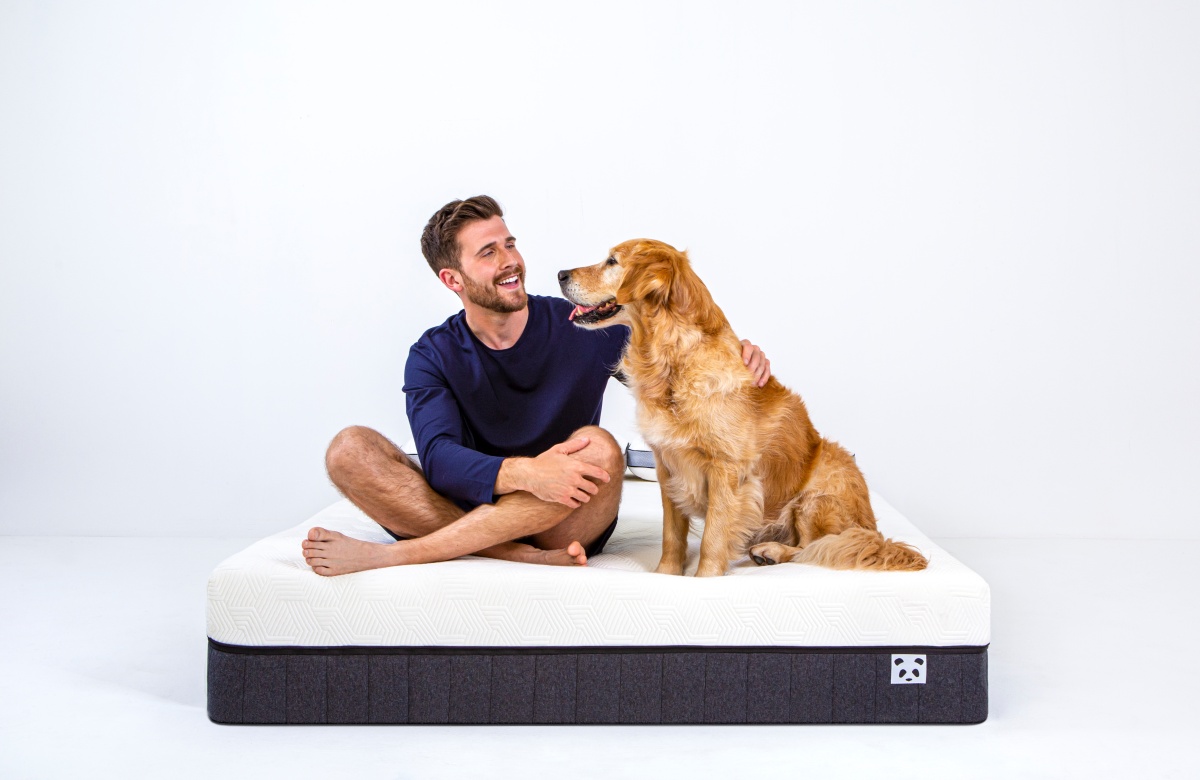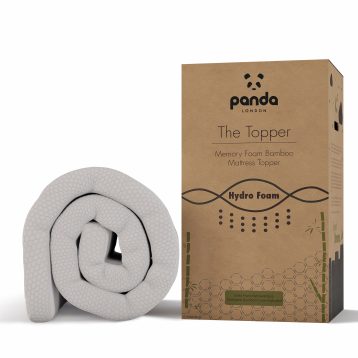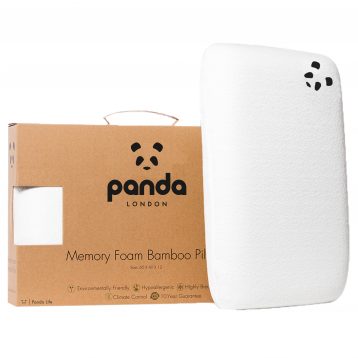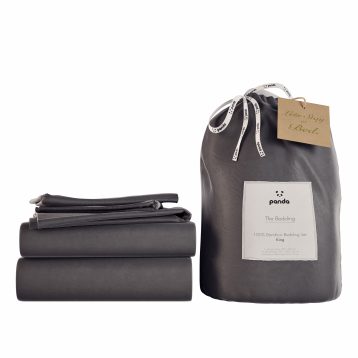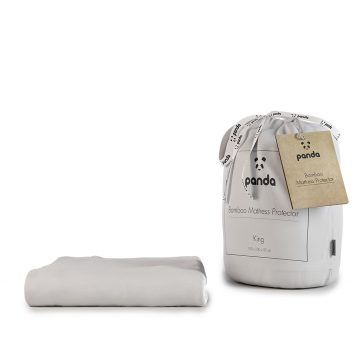The Ultimate Guide to Mattress Cleaning: Tips and Techniques Revealed
Last updated on May 9th, 2024 at 03:54 pm
To clean a mattress, start by stripping off all bedding and vacuuming the surface to remove dust and debris. Spot clean stains with a mild detergent solution and blot them dry, or use a baking soda-hydrogen peroxide mix for tougher stains. Deodorize the entire mattress by sprinkling baking soda generously over it, letting it sit for at least 15 minutes, then vacuuming it up. Air the mattress out near an open window or in a well-ventilated room, and if possible, flip and rotate it to even out wear. Finish by covering the mattress with a washable protector to prevent future stains and allergens.
Maintaining a clean mattress is essential for both hygiene and health. Over time, mattresses can accumulate dust, allergens, stains, and odours, impacting the overall sleep environment as well as your well-being. In this comprehensive guide, we will provide you with a step-by-step process for effectively cleaning your mattress. From preparation and basic cleaning steps to deep cleaning techniques and addressing specific concerns, this guide will ensure that you can enjoy a clean and fresh mattress for a better night’s sleep for years to come.
How to prepare your mattress for deep cleaning
Your hybrid mattress is an investment into better sleep and healthier life, so it’s vitally important you do everything right when it comes to keeping it spick and span. Before diving into mattress cleaning, it is necessary to prepare yourself properly. A clean mattress makes for better sleep, but with mattresses being the size that they are, it can seem like a daunting task! Don’t worry – if you get things ready beforehand, it will seem so much easier. Let’s split that into two steps…
Gathering necessary cleaning supplies and tools
First of all, grab all of the tools and supplies you’re going to need for this task. These might include:
Baking soda
A vacuum cleaner
Dry and damp cloths
A steam cleaner
White vinegar
Soap
Warm water
You likely won’t need all of these items, so read on to find out which ones will work best for you, your mattress, and the amount of cleaning you need to do.
Remove bedding and create a well-ventilated cleaning area
The first step needs to be removing your bedding – take the duvet, pillows and bottom sheet off the bed, and throw the covers into the washing machine while you’re at it. That way, when you have a clean mattress, you’ll snuggle under fresh sheets! Open the windows to ensure good airflow into the room, especially if you’re using strong chemical-based cleaning fluids. Now you’re ready to clean your mattress and enjoy fresher sleep properly.

What are the basic mattress cleaning steps?
When cleaning and caring for your mattress, take the time to address the basics first – vacuuming, spot cleaning, and making sure you know exactly what you need to tackle different types of stains.
Step 1: vacuuming the mattress to remove dust and debris
The first step after preparation should be to vacuum your mattress – this is easy if you have a small handheld device, but can also easily be done by making use of the various attachments that come with larger vacuums. Simply run the vacuum across the surface of the mattress, taking care to be gentle as you do so. This should pick up any crumbs, feathers, hair or dust.
Step 2: spot cleaning stains using appropriate cleaning solutions
You might notice your mattress has some unsightly stains across it. In the interest of hygiene, these should be removed while cleaning your sleep surface. You’ll want to follow your manufacturer’s instructions in terms of products to avoid (typically based on the material(s) of your mattress) and what they recommend you can use. Once you know what you should use for the type of stain you’re dealing with, apply the cleaning solution and then gently blot the stain with a clean – dry or very slightly damp – cloth or sponge. You should only use a small amount of product, to avoid drenching the mattress, and avoid excess rubbing as this can push the stain deeper into the mattress.
Tips on tackling different stains
There are various stains you might find on your mattress: blood, urine, and sweat are the most common. Let’s look a little further at each one to see how you can ensure you can remove them easily!
Blood – Whether it’s from a cut knee or a heavy period, blood is quite often found on mattresses. One way to remove it is by using hydrogen peroxide – it’s non-toxic, but always check if the manufacturer has any warnings against it. You might want to opt for something like Ecover, a more natural stain remover.
Urine – If there have been any accidents, you might need to remove urine from your or your child’s mattress; if you catch it before it stains, be sure to soak as much of it up as you can using towels or tissue. But if it’s already dried and left a mark, then a stain remover might be the way to go – cleaning expert Debra Johnson says that distilled white vinegar can effectively remove urine stains.
Sweat – You might notice sweat stains on your mattress, although with bamboo bedding the chances are much less as the material is so breathable. Hydrogen peroxide is helpful here too, and can be mixed with a bit of baking soda to create a cleaning solution if the stains are particularly stubborn.
Deodorising the mattress
Stains or no stains, you will definitely want to deodorise your mattress during the cleaning process. This helps to keep it fresh, and adds to the cleanliness of your sleeping surface. Regardless of whether you think your mattress actually smells, it is worth doing this anyway!
What are some methods for eliminating odours?
There are many ways to get rid of unwanted or nasty smells emanating from your mattress. You can buy scented sprays that are safe for use on various fabrics, although these often just cover up the smell – you actually want to eliminate it! Sunlight is also known to help neutralise odours, so leaving your curtains open where the sun can shine right on the mattress is a great idea if you have plenty of time; this is something to consider eliminating when going on holiday. You won’t be using your mattress, so you may as well let it deodorise while you’re not there. Distilled white vinegar mixed with water can be spritzed onto your mattress to eliminate odours.
How can you use baking soda to deodorise a mattress?
There’s one thing we haven’t mentioned yet that is a really common way to eliminate any unwanted smells from your mattress – and that is baking soda! A popular product in any cleaning cupboard, it is definitely worth having it to hand when cleaning your hybrid mattress. Sprinkle it over the entire surface, and leave it for as long as you can so it can absorb any unpleasant smells. Then simply vacuum it away, and you’ll be left with clean freshness. You can also mix a few drops of scented essential oil in with your baking soda before you sprinkle it, if you want to add a little bit of something extra.
Hint: if you do choose to add an essential oil, go for something calming that aids sleep like lavender chamomile or bergamot.
Deep cleaning techniques
If you need to really deep clean a mattress, which you might do, then there are a few ways you can do so. Again, be sure to refer to the manufacturer’s instructions where possible – and you must always ensure the mattress is completely dry before you add any bedding back on or allow anyone to sleep on it.
One way to deep clean is by using a steam cleaner after you’ve hoovered; it is optimal to do this outside on a warm, sunny day if possible. This is because it can leave the mattress fairly damp, and you want it to dry with an outdoor freshness that really lasts! Deep cleaning like this can effectively remove embedded dirt, dust mites, and allergens from the mattress. You might also look out for an upholstery cleaner specifically designed for mattresses, but a steam cleaner will do the job just as well.
Addressing specific concerns
Your mattress, like everything else in your home, is personal to you – so you might have some specific concerns that go beyond the ordinary. We’ll consider those now, so you’re fully armed when it comes to getting your mattress clean.
How can you remove allergens like dust mites and pet dander?
If you have pets on the bed, for example, your mattress may have attracted some pet dander or extra dust mites. To get rid of these, be extra vigilant with the vacuum. You might also want to use a lint roller for those really stubborn specs!
Dealing with mould and mildew: preventative measures and cleaning tips
Unfortunately, some homes really do just attract mould and mildew no matter what you do. If this has happened to you and it’s impacted your mattress but you’re not in a position to replace it right now they don’t worry! Act as soon as you notice the issue, and use an equal mixture of white vinegar and water to kill the spores and wipe them away. Try to avoid bleach, as this can damage your mattress.
Mattress maintenance and care
So now you know everything there is to know about actually cleaning your mattress, but what about a bit of maintenance? This should also help keep your mattress fresh while prolonging its lifespan. Rotate the mattress every few months to promote even wear and prevent sagging – and if you have a standard (non-hybrid) mattress, you ought to flip it around once a year. Use a mattress protector to guard against spills, stains, and allergens – we recommend our silent and waterproof bamboo mattress protector. Follow the manufacturer’s guidelines no matter what you do, and be sure to air your mattress regularly by leaving a few hours between stripping used sheets and putting new ones on.
Natural and eco-friendly cleaning options
Eco-friendly is more than just a buzzword – it’s something super important to consider for your health, planet, mattress, or whatever else you’re cleaning. Many high street cleaners contain harsh chemicals that are bad for the skin and lungs and harmful to the environment. They can also damage the mattress material. We’ve mentioned a few products you can use for homemade (and much more eco-friendly) cleaning products, including white vinegar, baking soda, and essential oils. There are also plenty of ‘green’ cleaners on the market, from brands like Method, Smol, and Ecover. Just check the ingredients, especially if you have any allergies!
Conclusion
Hopefully you now feel well equipped and ready to clean your mattress – this helps you enjoy better and more supportive sleep for longer, and improves the hygiene of your bedroom and living space as a whole. You’ll feel so much more refreshed when you wake up after sleeping on a nice clean mattress! From ventilating the room to gently vacuuming, treating stains and deodorising your mattress, it really is an important process. It might seem like a huge task, but it is definitely something worth incorporating into your existing home maintenance routine.
FAQ
How often should I clean my mattress?
Last updated on May 9th, 2024 at 03:54 pm
It’s recommended to clean your mattress every six months to maintain hygiene and prolong its life. However, you may need to clean it more frequently if you have allergies or spills.
Can I use a regular household vacuum to clean my mattress?
Last updated on May 9th, 2024 at 03:54 pm
A regular vacuum with an upholstery attachment is suitable for removing dust and allergens from your mattress. For best results, use a vacuum with a HEPA filter.
How can I get rid of bed bugs in my mattress?
Last updated on May 9th, 2024 at 03:54 pm
Bed bugs require professional treatment. However, vacuuming your mattress and washing all bedding in hot water can help reduce bed bugs until professional pest control can address the infestation.
Is it safe to use bleach on my mattress?
Last updated on May 9th, 2024 at 03:54 pm
Using bleach on mattresses is generally not recommended, as it can damage the fabric and materials. Instead, opt for mild detergent or solutions specifically designed for mattress cleaning.
Can I steam-clean my mattress?
Last updated on May 9th, 2024 at 03:54 pm
Yes, steam cleaning is an effective way to deep clean and disinfect your mattress without harsh chemicals. Ensure the mattress is completely dry afterwards to prevent mould growth.
How do I remove odours from my mattress?
Last updated on May 9th, 2024 at 03:54 pm
Sprinkling baking soda over the surface of your mattress, leaving it for a few hours or overnight, and then vacuuming it off can effectively remove odours.
What should I do if my mattress gets wet?
Last updated on May 9th, 2024 at 03:54 pm
Blot up as much moisture as possible with towels, then use fans or a dehumidifier to dry the mattress thoroughly. Avoid using heat, as it can set stains and damage the mattress materials.
How can I protect my mattress from getting dirty?
Last updated on May 9th, 2024 at 03:54 pm
A mattress protector can shield your mattress from spills, dust, and allergens, making it easier to keep clean and extending its lifespan.
Explore our range:
Bamboo Mattress Topper
Rated 4.97 out of 5£84.96 – £204.00Memory Foam Bamboo Pillow
Rated 4.96 out of 5£44.95Original price was: £44.95.£38.21Current price is: £38.21.100% Bamboo Bedding
Rated 5 out of 5£16.96 – £153.00Bamboo Mattress Protector
Rated 5.00 out of 5£16.96 – £42.50

